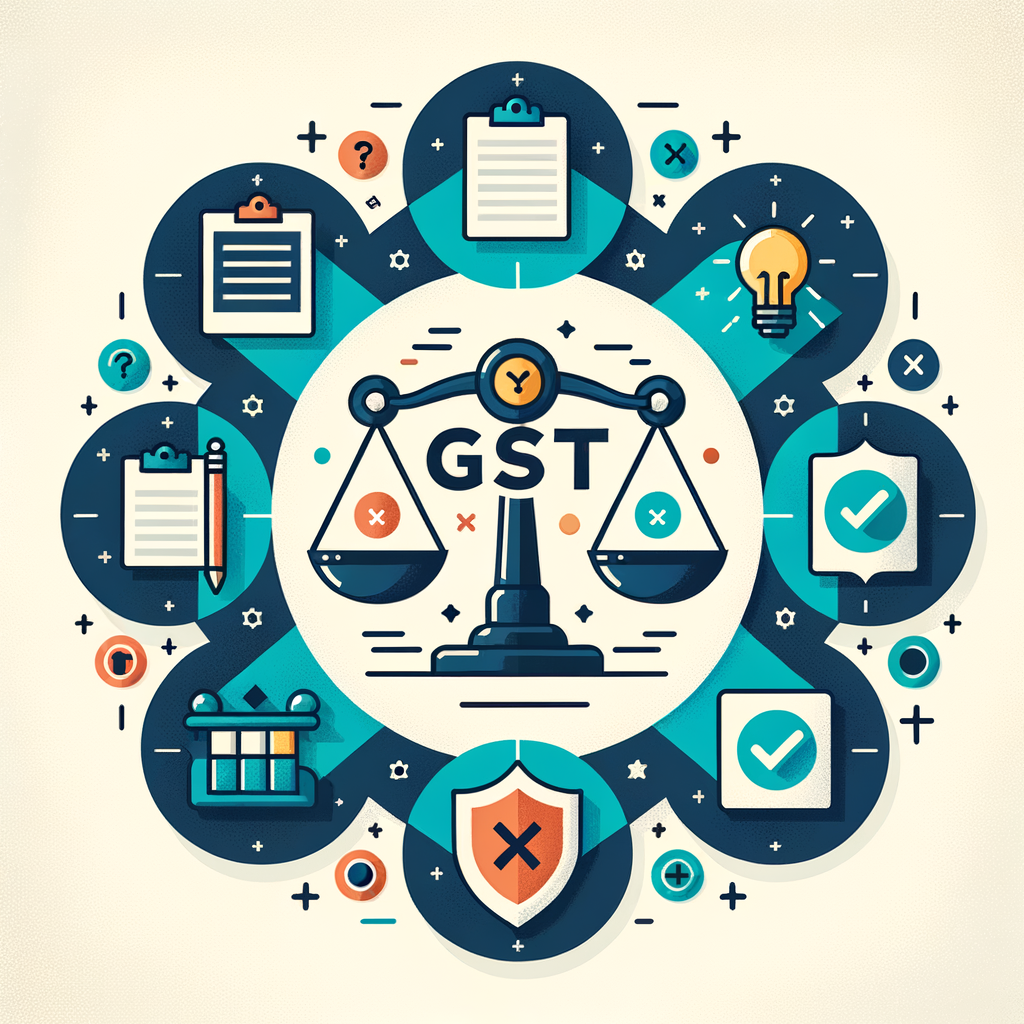GST Litigation: Common Issues and How to Avoid Them
Facing GST notices? Our guide covers the most common GST litigation issues for Indian businesses, from ITC mismatches to HSN code errors, and provides actionable tips on how to avoid them. Stay compliant with TaxRobo.
Introduction
That official-looking envelope from the tax department can send a shiver down any business owner’s spine. It’s a moment of anxiety, filled with questions about what went wrong. While the Goods and Services Tax (GST) was introduced to simplify India’s complex tax structure, navigating its compliance requirements can be a minefield. Minor oversights can quickly escalate into formal notices, demands, and lengthy legal battles. This article will break down the most frequent GST litigation common issues faced by businesses in India and provide a practical checklist to help you stay compliant, avoid legal trouble, and focus on what you do best—running your business.
Understanding GST Litigation in Simple Terms
Before diving into the problems, let’s clarify what “GST litigation” really means. In simple terms, GST litigation is the formal process of resolving a dispute between a taxpayer (your business) and the GST authorities. It’s not a sudden event but a process that typically follows a clear path when the department suspects a discrepancy or non-compliance. The goal for every business owner should be to implement robust processes to prevent ever starting down this path.
The journey into litigation usually begins with a preliminary action from the department, which could be a simple scrutiny of your returns or a detailed audit of your books. If they find discrepancies, the process unfolds as follows:
- Scrutiny & Audit: The GST officer examines your returns and records for correctness.
- Show Cause Notice (SCN): If the officer believes tax has been short-paid, wrongly refunded, or ITC has been incorrectly claimed, they issue an SCN. This is a formal document asking you to explain why a certain action shouldn’t be taken against you.
- Adjudication: After you submit your reply, an officer (the adjudicating authority) will review the case and pass an order, either accepting your explanation or confirming the tax demand, interest, and penalties.
- Appeals Process: If you disagree with the order, you have the right to appeal to higher authorities, starting with the Appellate Authority, then the GST Appellate Tribunal, and potentially moving up to the High Court and Supreme Court.
Top 5 GST Litigation Common Issues for Businesses in India
Understanding the most common triggers is the first step toward prevention. A vast majority of disputes arise from a handful of recurring errors, which are some of the most common GST issues for businesses India has seen since the regime’s inception. By being aware of these pitfalls, you can build a strong defense system for your business.
1. Mismatch in Input Tax Credit (ITC): GSTR-2B vs. GSTR-3B
This is, by far, the most frequent reason businesses receive a GST notice. The issue is straightforward: you claim a certain amount of Input Tax Credit (ITC) in your monthly summary return (GSTR-3B), but that amount doesn’t match the auto-generated statement of eligible credit (GSTR-2B). Your GSTR-2B is populated based on the sales invoices uploaded by your suppliers in their GSTR-1 returns. When there’s a difference, the tax department’s system flags it as a potential over-claim of ITC on your part. This often happens due to simple reasons like a supplier delaying their GSTR-1 filing, entering incorrect GSTIN details on an invoice, or a simple clerical error. The consequence is a notice demanding that you reverse the excess ITC claimed, almost always accompanied by a demand for interest (currently at 18% per annum) and the threat of penalties.
2. Incorrect Classification: HSN Codes and GST Rates
Applying the correct tax rate is fundamental to GST compliance, and this depends entirely on correctly classifying your goods or services. The GST framework uses the Harmonized System of Nomenclature (HSN) for goods and the Services Accounting Code (SAC) for services. The problem arises when a business uses the wrong code, which in turn leads to applying an incorrect GST rate. This can happen due to ambiguity in HSN descriptions for new or unique products, a lack of due diligence, or simply misunderstanding the classification rules. Applying a lower rate results in underpayment of tax, which the department will demand upon discovery, along with interest and penalties. Conversely, applying a higher rate can hurt your cash flow and make your product uncompetitive. This issue is a significant GST litigation problem in India because classification disputes can be subjective and require detailed technical arguments to resolve.
3. E-way Bill Discrepancies and Violations
The e-way bill is a mandatory digital document for the movement of goods worth over ₹50,000. It acts as a digital trail for tax authorities to monitor the transport of goods and prevent evasion. Litigation in this area arises from two main sources: discrepancies in the e-way bill details and the outright failure to generate one. Common discrepancies include mismatches between the vehicle number, quantity of goods, or value mentioned in the e-way bill versus the actual physical goods and the tax invoice. These issues can occur due to last-minute vehicle changes not being updated, simple data entry errors, or the e-way bill expiring before the journey is complete. The consequences are severe and immediate. Under Section 129 of the CGST Act, officers have the power to detain and seize both the goods and the vehicle, imposing heavy penalties for their release.
4. Non-compliance with Reverse Charge Mechanism (RCM)
The Reverse Charge Mechanism (RCM) flips the usual tax payment responsibility. Instead of the supplier collecting and paying GST, the recipient of the goods or services is liable to pay the tax directly to the government. This mechanism is applicable on a specified list of goods and services, such as those procured from a Goods Transport Agency (GTA), legal services from an advocate, sponsorship services, or services imported from outside India. Many businesses, especially smaller ones, are either unaware of the full list of RCM-applicable services or forget to calculate and pay this liability while filing their returns. Since this tax is paid directly via cash ledger (not by using ITC), it’s a direct cash outflow that is often missed. During an audit or scrutiny, the department can easily identify this non-payment and demand the tax, along with interest and penalties.
5. Valuation of Goods and Services
GST is levied on the “transaction value,” which is generally the price paid or payable for a supply. However, determining the correct value can become complex in specific scenarios, triggering disputes. One of the most common areas of litigation involves transactions between “related parties” (e.g., transactions between two companies under the same management or family members). In such cases, the tax department may argue that the price was artificially lowered to reduce the GST liability and will seek to apply a fair market value. Other problematic areas include valuing free samples, barter exchanges, or composite supplies where multiple goods/services are bundled for a single price. A misunderstanding or misapplication of the GST valuation rules can lead to a notice from the department demanding tax on the differential value they believe was under-reported.
How to Avoid GST Litigation in India: A Proactive Checklist
The best way to win a legal battle is to avoid it altogether. By adopting a proactive and disciplined approach to compliance, you can significantly reduce your risk exposure. Following these practical tips to prevent GST litigation India can build a strong compliance framework for your business.
1. Conduct Monthly Reconciliations without Fail
This is the single most important habit to prevent ITC-related notices. Before you even think about filing your monthly GSTR-3B, you must meticulously reconcile your purchase register with the data reflected in your auto-populated GSTR-2B. Use accounting software or a dedicated reconciliation tool to automatically match invoices. For any invoice that appears in your books but not in your GSTR-2B, you must immediately contact the supplier and urge them to file their return correctly. Crucially, do not claim ITC for any invoice that is not reflected in your GSTR-2B. While this might feel like a temporary loss, it is the correct procedure and saves you from future demands of tax, interest, and penalties.
2. Validate HSN/SAC Codes and Tax Rates
Do not leave classification to guesswork. For every product you sell or service you provide, double-check the HSN or SAC code and the corresponding tax rate. The official GST Portal has a search tool that can help you find the relevant code. For businesses dealing with a wide range of products or complex items, it is highly advisable to consult a GST professional. They can help you create a master HSN/SAC list for all your offerings, which can then be standardized across your invoicing and accounting systems. This one-time exercise provides clarity and consistency, preventing future classification disputes.
3. Implement a Double-Check System for E-way Bills
Human error is the leading cause of e-way bill discrepancies. To combat this, implement a simple “maker-checker” system in your logistics or dispatch process. One person can be responsible for generating the e-way bill, while a second person must verify all the details against the tax invoice before the vehicle leaves your premises. This standard operating procedure (SOP) should include checks for:
- Correct GSTINs of supplier and recipient
- Accurate invoice number and date
- Correct HSN code and value of goods
- Valid vehicle number and transporter details
- Ensuring Part-B of the e-way bill is updated before movement commences
4. Maintain Meticulous Records and Documentation
In any tax dispute, clear and organized documentation is your strongest evidence. The GST law mandates that you maintain records for a minimum of six years from the due date of filing the annual return for that year. Your record-keeping should be impeccable and easily accessible. This includes:
- All tax invoices issued and received
- Bills of supply
- Credit and debit notes
- Receipt and payment vouchers
- Records of ITC claimed and utilized
- E-way bills generated
- Stock registers and production records
Keeping these documents organized, preferably in both digital and physical formats, will make responding to any departmental query quick and efficient.
5. Stay Informed and Seek Professional Help
GST laws are dynamic, with rules, rates, and procedures being updated through notifications and circulars. It’s crucial to stay informed about these changes. You can do this by regularly visiting the official Central Board of Indirect Taxes and Customs (CBIC) website. However, for a busy business owner, a more practical approach is to subscribe to newsletters from reputable tax consultancies like TaxRobo, which provide simplified summaries of these updates. Most importantly, never hesitate to seek professional help. The cost of a consultation to clarify a doubt about HSN codes, RCM applicability, or ITC rules is negligible compared to the cost of potential interest and penalties down the line.
Conclusion: Proactive Compliance is Your Best Defense
Navigating the complexities of GST can feel daunting, but it doesn’t have to lead to litigation. The key to staying out of trouble is shifting your mindset from reactive problem-solving to proactive compliance. Avoiding GST litigation common issues is not about preparing to fight the department; it’s about building robust internal processes that ensure accuracy and transparency from the very beginning. Regular and disciplined reconciliation of Input Tax Credit, diligent validation of HSN codes, meticulous record-keeping, and a commitment to staying informed are the four pillars of a strong GST compliance framework. These practices will not only shield you from legal disputes but also improve your business’s overall financial discipline.
Navigating GST can be challenging. If you want to ensure your business is fully compliant and protected from potential litigation, the experts at TaxRobo are here to help. Contact us today for a GST health check-up!
Frequently Asked Questions (FAQs)
1. What is the first thing I should do if I receive a GST notice?
Do not ignore it. The first step is to read the notice carefully to understand the exact issue being raised, the deadline for your response, and the details of the issuing authority. Immediately gather all relevant documents, such as invoices, returns, and reconciliations related to the period in question. It is highly recommended that you consult with a tax professional at this stage to help you draft a timely, accurate, and comprehensive reply.
2. Can I claim ITC if it’s not appearing in my GSTR-2B?
As per the current GST rules, claiming Input Tax Credit is restricted to the invoices that are reflected in your auto-generated GSTR-2B. If a supplier’s invoice is missing, you must not claim ITC on it in your GSTR-3B. The correct course of action is to contact your supplier and request them to file their GSTR-1 and declare your invoice correctly. Claiming ITC that isn’t backed by GSTR-2B is one of the primary causes of GST litigation problems in India.
3. How can a small business owner stay updated on GST changes?
The best official sources are the GSTN portal (gst.gov.in) and the CBIC website (cbic.gov.in), which publish all new notifications, circulars, and orders. For simplified explanations and practical insights, you can subscribe to newsletters from reputable tax advisory firms like TaxRobo. Following reliable financial news portals also helps in keeping track of major announcements.
4. What are the financial implications of losing a GST litigation case?
The financial impact can be substantial and severely affect your business’s health. If an order is passed against you, you will typically be liable to pay the full disputed tax amount, along with accrued interest, which can range from 18% to 24% per annum. On top of this, penalties can be levied, which in cases of willful misstatement or fraud, can be as high as 100% of the tax amount. The cumulative financial burden can be crippling for a small or medium-sized business.



